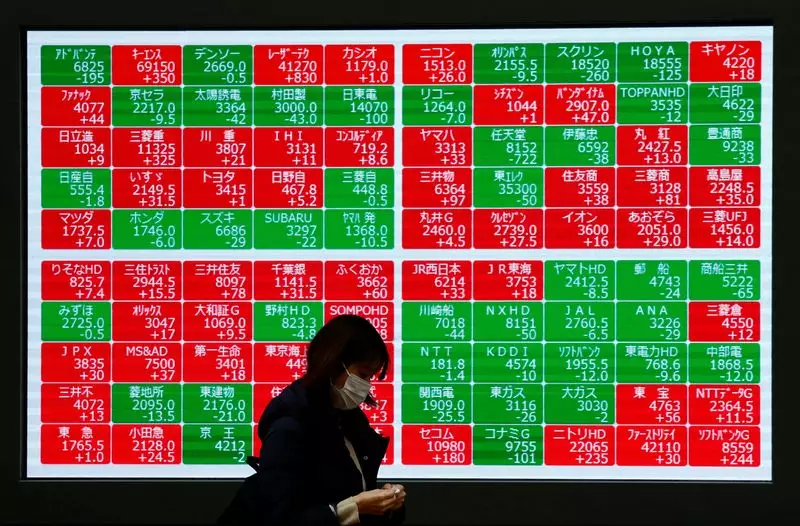Recent financial market movements have demonstrated how macroeconomic data can pivot investor sentiment dramatically. On a Friday that saw Wall Street stocks surge, cooler-than-expected inflation data played a pivotal role in alleviating fears surrounding a potential government shutdown and tariff threats highlighted by President-elect Donald Trump. This response underscores the correlation between economic indicators and market performance, particularly in an environment where consumers are closely monitoring their purchasing power.
A key highlight was the release of the Personal Consumption Expenditures (PCE) price index, which is the Federal Reserve’s preferred measure of inflation. The data showed that inflation was lower than anticipated, which analysts argue reinforces the belief that the Fed is on track to meet its 2% inflation target. Tim Ghriskey, a senior portfolio strategist, noted this in his commentary, emphasizing how the lower inflation rate is viewed positively by investors. His insights reflect a common sentiment that favorable data can ease concerns related to other pressing economic issues.
In the aftermath of this inflation report, the Federal Reserve’s upcoming monetary policy moves come into sharper focus. The Fed had recently indicated a slower pace of interest rate increases, which had caused market unease earlier in the week. Investors became jittery following announcements of a potential slowdown in rate cuts, shaking the equity markets. As Ghriskey aptly pointed out, ongoing debates in Washington over the nation’s debt ceiling and fears of a government shutdown have also contributed to market volatility. Historically, uncertainties such as this lead to market hesitance, as stakeholders grapple with how political instability might manifest in economic fallout.
The stock market indexes reflected this complexity. The S&P 500 and the Nasdaq appeared poised for substantial weekly declines, suggesting that concerns over financial stability were still resonating with investors. While the surge on that particular Friday offered some reprieve, it was clear that many traders were circumspect about future gains in such a turbulent environment.
The Broader Global Market Context
Simultaneously, it is essential to recognize that Wall Street’s optimism did not translate smoothly across the global marketplace. European markets fell sharply, spooked by Trump’s tariff threats aimed at the EU, signaling a ripple effect across international stocks. The MSCI index showcased a modest uptick in global stocks, yet many European markets entered a downward spiral, illustrating the interconnectedness of world economies. This divergence poses questions about resilience in different market segments and how investor sentiment might be swayed by U.S. policy decisions.
In Asia, indices reflected sluggishness too, with many markets closing in negative territory. This phenomenon underscores that despite encouraging data from the United States, external geopolitical impacts can significantly influence stock performance globally. Investors in Asian markets appear wary, which raises concerns that unresolved trade tensions and economic indicators elsewhere can dampen sentiments, irrespective of localized wins in the U.S. stock markets.
Amid the shifting financial landscape, commodities like gold and oil also reacted to the inflation data and its regulations. Gold prices surged, responding positively to the notion of softened inflation and economic uncertainty, despite the weekly forecast suggesting potential losses. Traditionally, gold serves as a hedge against inflation, drawing investor interest during uncertain economic climates. Similarly, oil prices showed a decline, primarily attributed to fears surrounding demand weakness, particularly in China, the world’s largest crude importer.
This correlation between economic reports and commodity pricing reinforces the idea of investor protection through diverse assets. If confidence in stocks wavers due to political instability or economic anxieties, the allure of commodities often amplifies, drawing away some investor capital from equities for potential safety.
The fluctuations in American financial markets offer valuable insights into investor psychology and the responsiveness of capital markets to macroeconomic indicators. The intersection of inflation data and broader economic realities vis-a-vis government policy has never appeared more critical. Moving forward, it will be crucial for investors to remain vigilant. As we navigate through these turbulent times, recognizing the interdependencies between U.S. markets and global factors will be key to achieving sustainable financial strategies in an increasingly unpredictable landscape. The current financial climate serves as a reminder of the delicate balance sustaining market dynamics, where investor sentiment is perpetually in flux, dictated by the ever-changing narrative of economic indicators and political discourse.

